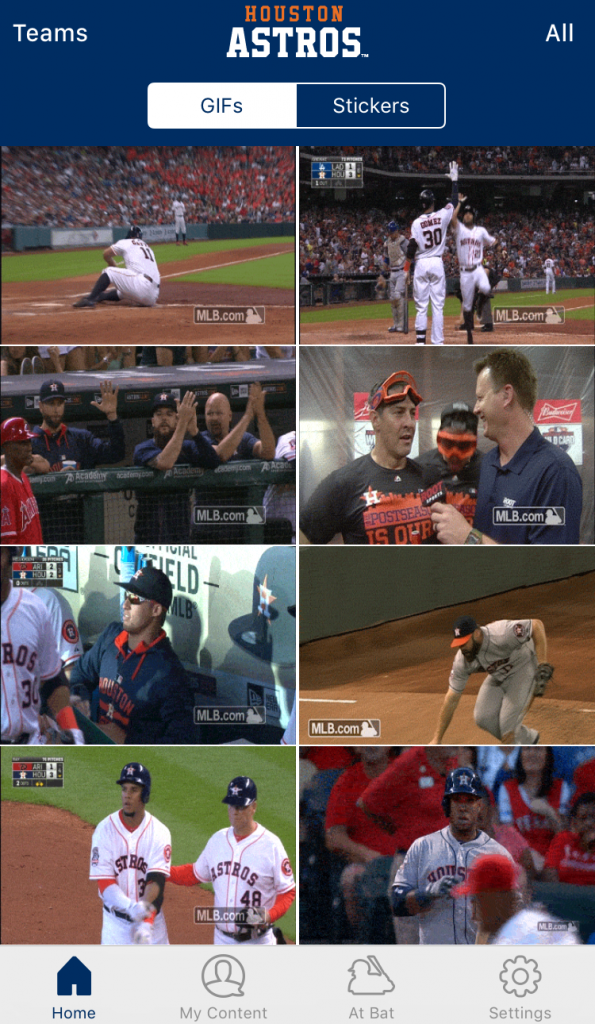Apple’s release of iOS 9 and its ability to allow content blocking on Safari has once again sparked conversation about blocking online advertising. Every now and again, the topic of ad blocker use crops up in the tech news circles. There are arguments made, grandiose solutions proposed, and villains identified. It’s the sites’ fault for allowing such terrible ads. It’s the ad networks’ fault for presenting such hideous and annoying material. It’s Google’s fault, it’s Apple’s fault, it’s Facebook’s fault. There are a lot of reasonable solutions out there — a switch back to native advertising, a rise in reader contributions, more reliance on direct partnerships — and what eventually shakes out will be some combination of those and some other things and it will only work for a little while. It’s a war of attrition between ad networks, content producers, and readers. But while we all contemplate the Future Of Online Publishing, let us not forget the actions we take today and how they affect the sites we use on a regular basis.
In fairness to the reader, it should be noted that these words will be a little biased. It’s always sticky for writers to opine on the mechanisms that directly affect their pocketbooks. Also, many of the sites I mention are staffed by acquaintances of mine, have paid me money to do things for them, or are just places I respect. Considering the audience, most of this is probably understood, but it should be mentioned.
The ad blockers you install on your browser are both simple and complex. The idea is simple. The blocker scans the code being loaded into the browser, identifies code (usually JavaScript or Flash) that has previously been identified as advertising, and disallows it from loading. The back end — the expanding database of advertising code — can be more complex, but the mechanism is fairly straight forward. These tools stop advertising code from loading. Advertising code can greatly increase the amount of tiem it takes a page to load. It can royally screw up readability and navigation of web pages. It can even install malicious code on your machine. It’s nasty and silly and annoying and nobody likes it. But, to overuse a common trope, it’s the cost of doing business.
Any “free” web site — a web site that does not charge a subscription fee to view its content — needs to make money to run. Bandwidth and server fees need to be covered. Writers have to (hopefully) be paid. Administrative fees have to be taken care of. It’s a business. In lieu of charging you directly, they allow advertisers to display content on their sites. The advertisers pay the web site for the right to do so.
Way back when, advertisers would make direct deals with web sites. Company X would call up Site Y and strike up a deal to advertise their products on the site. This took time and energy, and as the web became exponentially bigger and creating content became easier, this model became quite inefficient. This is where ad networks stepped in. Instead of Site Y working with Company X, Site Y did deals with Network A. Network A did tons of deals with all kinds of companies, and gave Site Y some JavaScript to insert into their code so that Network A could take care of all the rest. Network A would charge the companies, take a little off the top, and pay out Site Y. That’s pretty much where we stand now.
And as the web grew and grew, content expanded rapidly. This created more platforms for ad networks, and drove down the prices that those networks paid to content creators. These days, most sites get about $0.002 per impression or thereabouts. There are certainly other ways for sites to create revenue, but ads don’t pay as much as they used to, and they never paid a whole lot to begin with.
The rise in online advertising also meant that sellers had to do more to get their ads noticed. Ads got goofier, videos began auto-playing, cookies started tracking visitors’ traffic to help in delivering content the robots thought the reader would be interested in. It all culminated in the hot mess we know online advertising to be now. It’s no good, and it bothers almost everyone. And, at the time of this writing, we all need it.
Somewhere down the line — maybe it was the Napster craze, maybe it was the price of so many things getting driven down that the line between paid and free began to disappear — we all decided that it was OK for us to take things from sites and give them nothing in return. The old adage was that if you weren’t paying for a product, you were the product. Your Gmail address isn’t free. Your Facebook account certainly isn’t free. By joining these services, you were entering into a complicit agreement that these services could poke and prod your behavior and use that behavior for their own personal gain. But it’s all in the background. Perhaps this is what conditioned us to think that everything should be free. Online advertising was supposed to follow this model, too. You read something free of charge, and in return you had to see some junky ads. That is, until some smart people created tools that allowed readers to take away those ads, and money started leaking out of creators’ pockets.
When an ad blocker is used, the necessary script isn’t loaded. On the ad networks side, they never see the transaction, so it never gets logged. The site never gets credit for your eyes seeing its content. Bigger companies are affected slightly less. Views of articles on CNN.com, in theory, create brand recognition and increase the likelihood of you watching CNN on TV, where TV ads can be presented to you. For smaller (read: most) sites, this isn’t applicable. They need your eyes, and they need the advertisers to know that your eyes saw the content. Ad blockers stop this from happening.
Your favorite writers (sports or otherwise) need the advertisers to know this. Your favorite spots for opinions, statistics, or humor need this, as well. As someone who expects to consume content for no monetary cost, you agree to allow this. Or, you should. Many don’t. And if you allow ad blockers to prevent these sites from making money, you are, in affect, taking money away from them.
The nice thing about ad-supported content is that it democratizes the Internet. Beyond the cost to acquire Internet access, these sites can be viewed by anyone for free. There is no barrier to entry. Subscription sites aren’t a bad idea at all, but as soon as you do implement that model, you remove the right for some (i.e. lower-income or financially-strapped) readers from seeing your stuff. It’s a choice every creator has to make. But for those that choose to stay free, a horde of challenges await them.
Some of our favorite sites, like Sports Reference, offer ad-free subscriptions that charge a small fee to allow you to browse ad-free. It’s a great solution to the problem, and if you use Sports Reference even more than a little bit, you should consider it. It’s a way to keep ads out of your browser while simultaneously supporting the sites you like.
This site does not offer such subscriptions, nor does its parent site. There are content agreements in place, but ad money still makes up a big chunk of the [x]Graphs family’s revenue. It is a terrible contract that both sides have to enter, but it is necessary.
All of this, and I realize it had been a lot so far, is to say that if you enjoy a site’s content, white-list it from your ad blocker. Are ads annoying? You bet. Do we all wish there was a better way? Certainly. Have we come up with a better idea? Nope. And, until you yourself do, disable that ad blocker. This isn’t a “save our site” plea. This is a call to action to put your money where your mouth is. If you want to read something, suck it up and allow those sites to make money. It’s not pretty, it’s not fun, but it’s only fair.
Think about where we would be without Baseball Reference or Baseball Savant or VICE Sports or Deadspin or SB Nation. Your personal thoughts about these places aside, they helped and continue to help shape the landscape of the business. They aren’t needed on a purely utilitarian scale, but they help us research, enjoy, learn, and appreciate our favorite sports better than most sites can. A world without these sites is a world run solely by Disney, News Corp, and Viacom. Independent sites are good for everyone, regardless of subject matter.
Most independent and/or freelance sports writers on Twitter are pretty approachable. Ask them about the lavish lifestyle they lead as writers. It’s hard. Revenues are falling and therefor pay is falling. And never forget that the marketplace of writers is also growing. It sucks out there. Look at what happened to Sports on Earth. It was a pie in the sky idea that promoted quality writing over everything else and it failed. Money is hard to come by.
Will this ever be fixed? Who knows. Maybe the Golden Age of Internet Writing (if there ever was one) is dead. But until the bouncer kicks us out, let’s all work to make sure the people we like and and admire get as much as they can for all their work. If you use an ad blocker, white-list your go-to sites. If you don’t know how to, Google it. Google will gladly take your query and enter it into the ever-growing list of queries that you allowed it to capture by agreeing to use their service. The Internet is a grimy place full of trade offs. It’s not changing any time soon. Let’s at least support those crazy enough to try and make a living off of it.




